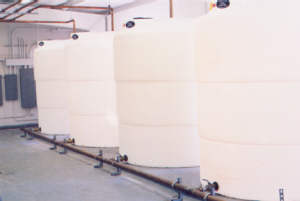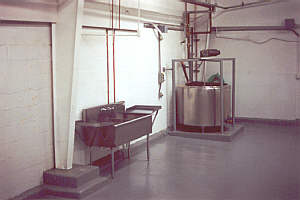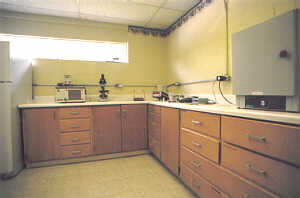
Natura Scio has its own lab
to provide micro figures on the Certificate of Analysis of
each batch of product. The usual analysis is conducted
(Ecoli, colliform, mold and yeast, and total plate count),
in addition to whatever other micro tests our customer
may request at the time of purchase. In addition,
Natura Scio has set up an overnight service arrangement
(with total QC turnaround still lasting the usual 5 days),
with
Medallion Labs in Minneapolis. On July 1st (2003),
we sent them a sample of
GP-150
(approximately 45 days old)
as a test.
Here
were the results. (The lab is essentially complete, with only
a
Parker
Scientific hood left to install (to be finished by close of
business day, 7/3/03). The micro test materials are made
by 3-M, and all micro tests are standard in the industry.)
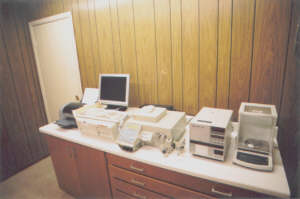
Chemical Analysis: HPLC Station

The specific carboxyls that Natura Scio
uses -- compounds that comprise the active components of our products --
can be tested using a single HPLC column. An excess or insufficient amount
of any specific compound (which will vary with each formula) tells us that
there is something wrong with a particular batch. Since we realize that
our customers will often dilute our products to meet their specific
objectives, it is all the more important to provide assurances -- both
to ourselves and to our customers, as required -- that each batch has
the exact amount of each component necessary for the product, as a whole,
to do its job. Every time. With every batch.
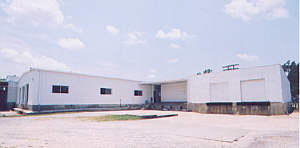
Production Area -- (Exterior)
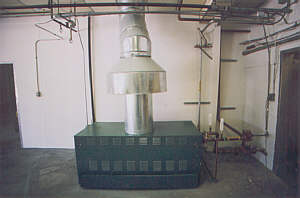
Boiler: Over 1M BTU

The company's main boiler,
new and just recently installed, can produce enough hot water to
keep up with a 3,000,000 pound
per week production schedule -- considerably more than the
rest of operation can now accommodate.
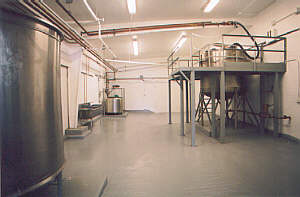
Main Production Room

The main production room involves
the interaction of three tanks -- two with agitators, with a third one
a "feeder tank." There are backup provisions for all motors and blades.
All pumps and water lines are made or are suitable
for food-grade applications and meet the highest
GMP standards. Since no raw materials or finished
product is stored in this room, it is -- even at
a thousand square feet -- more than sufficient
in size. (See
close-up
of main production tank (1,100 gallon -- where each 60 minute "turn"
produces 10,000 lb. output).)
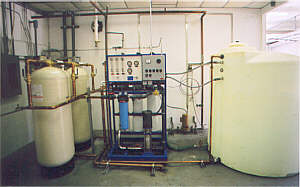
Water Purification System

Chemical analysis of
the Lake Charles municipal water, drawn from the Chico
aquifer, showed a product which, except for chlorine
residuals, was quite pure by city water standards.
Nonetheless, an industrial 22,000 GPD reverse osmosis and
activated carbon filter system was built at the
production facility. The system is brand new, fully tested,
and personnel have been fully trained in operation
and preventative maintenance. The primary vendor
is in Houston -- just over a two hour drive.
(See
close-up
of activated carbon filter vessels;
close-up of
reserve osmosis system).
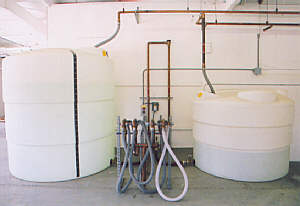
Filling Station for Totes & Barrels

The picture at right shows the
area set aside for the filling of barrels and totes with finished product.
It is fully operational and allows for four separate filling
activities to run concurrent. The picture just below it shows the
side view where the first and second of what will be
four fully operational holdings tanks -- 2,500 gallons
each -- that will be in place by July 8th.
 Cellulose Tank
Cellulose Tank:
The picture below shows up a close-up of the methylcellulose and clean-up area.
